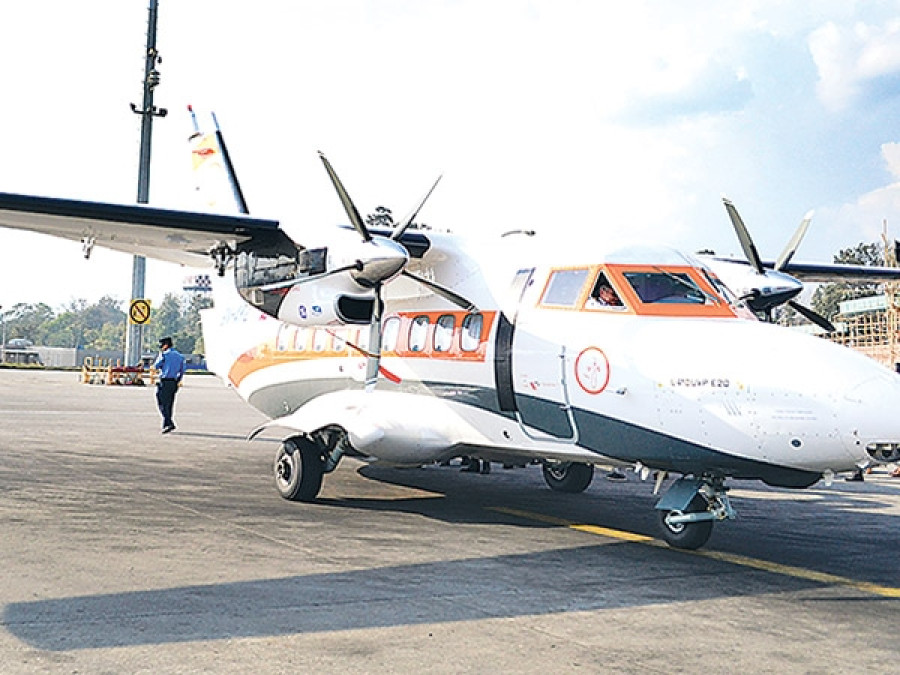Money
Goma Air flight diverted due to TIA congestion
A Goma Air flight headed to Kathmandu was forced to divert to Ramechhap airport on Wednesday after it was told to circle the skies for more than an hour due to air traffic congestion at Tribhuvan International Airport (TIA).
Tika Prasad Bhatta
A Goma Air flight headed to Kathmandu was forced to divert to Ramechhap airport on Wednesday after it was told to circle the skies for more than an hour due to air traffic congestion at Tribhuvan International Airport (TIA).
The Let 410 aircraft bearing the call sign 9N-AKZ was returning from Lukla with 18 foreign passengers on board. It had taken off from the airstrip in the Himalaya at 12 noon.
According to airport authorities, the pilot decided to land the aircraft at Ramechhap in the east of the Valley fearing it could run out of fuel after being put in a holding pattern for such a long time.
Two other aircraft of Tara Air and Simrik Airlines were also forced to land at Ramechhap airport on Wednesday following a sudden deterioration in the weather. Likewise, another flight of Tara Air from Lukla to Kathmandu was forced to divert to Phaplu airport.
Pralhad Niraula, an air traffic controller at Ramechhap airport, said that aircraft were forced to wait for a long time to land or take off at TIA due to severe traffic congestion. “Normally, flights originating in the eastern hills and mountain districts land at Ramechhap airport whenever there are problems at Kathmandu airport.” The runway of the airport in Ramechhap was blacktopped 10 months ago, but no flights take off or land here.
An increase in the number of domestic planes coupled with a rise in international flights has put immense pressure on the aviation infrastructure at TIA.
The period March-May is the second peak tourist season in Nepal. Hundreds of trekkers and mountaineers fly to Lukla, the gateway to Everest, during this time.
On Tuesday, there were more than 80 flights, including chopper operations, on the Kathmandu-Lukla sector, according to airport authorities. Lukla airport, the most lucrative sector for domestic carriers, normally closes before 2 pm due to high winds.
The Everest region receives more than 35,000 trekkers annually. Nepal’s domestic air passenger movement jumped 28.85 percent to a record 1.75 million in 2016, as travellers chose to fly rather than drive over bone-jarring national highways. Domestic carriers received 393,548 more flyers last year.




 24.42°C Kathmandu
24.42°C Kathmandu (1).jpg)













